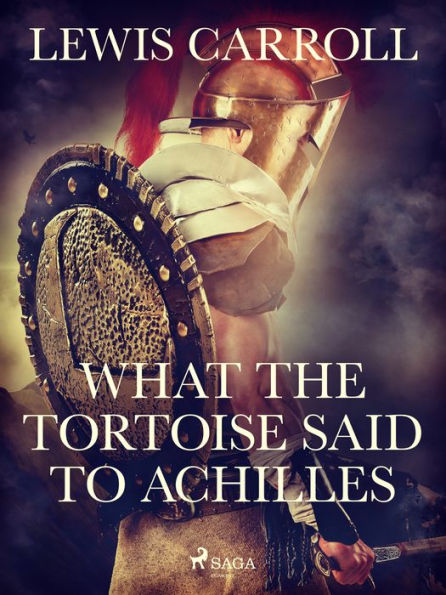What the Tortoise Said to Achilles
When a tortoise challenges a great Greek hero to use his logic in order to decipher a simple philosophical argument, slight chaos ensues. ‘What the Tortoise Said to Achilles’ is an endless cycle of suppositions and deductions. A refined piece of philosophical writing, Caroll’s discussion was one of the first steps towards paradoxically explaining logical truth. His clever prose makes this novel an essential read for budding philosophers and logic aficionados. Lewis Caroll (1832-1898) was a British author. He was famed for his novel ‘Alice in Wonderland' and its sequel ‘Through the Looking-Glass’. Both of which have been successfully adapted to film and stage. Aside from this, he was also a mathematician, professional photographer, and clergyman. His colorful plotlines, powerful imagery, and endless imagination earned him the title of one of the most notable authors of the nineteenth century. Among his other notable works are the poetic collection "Phantasmagoria and Other Poems", the poem "The Hunting of the Snark", and the fairy novel "Sylvie and Bruno".
1120420363
What the Tortoise Said to Achilles
When a tortoise challenges a great Greek hero to use his logic in order to decipher a simple philosophical argument, slight chaos ensues. ‘What the Tortoise Said to Achilles’ is an endless cycle of suppositions and deductions. A refined piece of philosophical writing, Caroll’s discussion was one of the first steps towards paradoxically explaining logical truth. His clever prose makes this novel an essential read for budding philosophers and logic aficionados. Lewis Caroll (1832-1898) was a British author. He was famed for his novel ‘Alice in Wonderland' and its sequel ‘Through the Looking-Glass’. Both of which have been successfully adapted to film and stage. Aside from this, he was also a mathematician, professional photographer, and clergyman. His colorful plotlines, powerful imagery, and endless imagination earned him the title of one of the most notable authors of the nineteenth century. Among his other notable works are the poetic collection "Phantasmagoria and Other Poems", the poem "The Hunting of the Snark", and the fairy novel "Sylvie and Bruno".
2.99
In Stock
5
1

What the Tortoise Said to Achilles
3
What the Tortoise Said to Achilles
3Related collections and offers
2.99
In Stock

Product Details
| ISBN-13: | 9788726645729 |
|---|---|
| Publisher: | Saga Egmont International |
| Publication date: | 09/06/2021 |
| Sold by: | De Marque |
| Format: | eBook |
| Pages: | 3 |
| Sales rank: | 736,931 |
| File size: | 330 KB |
About the Author
From the B&N Reads Blog
